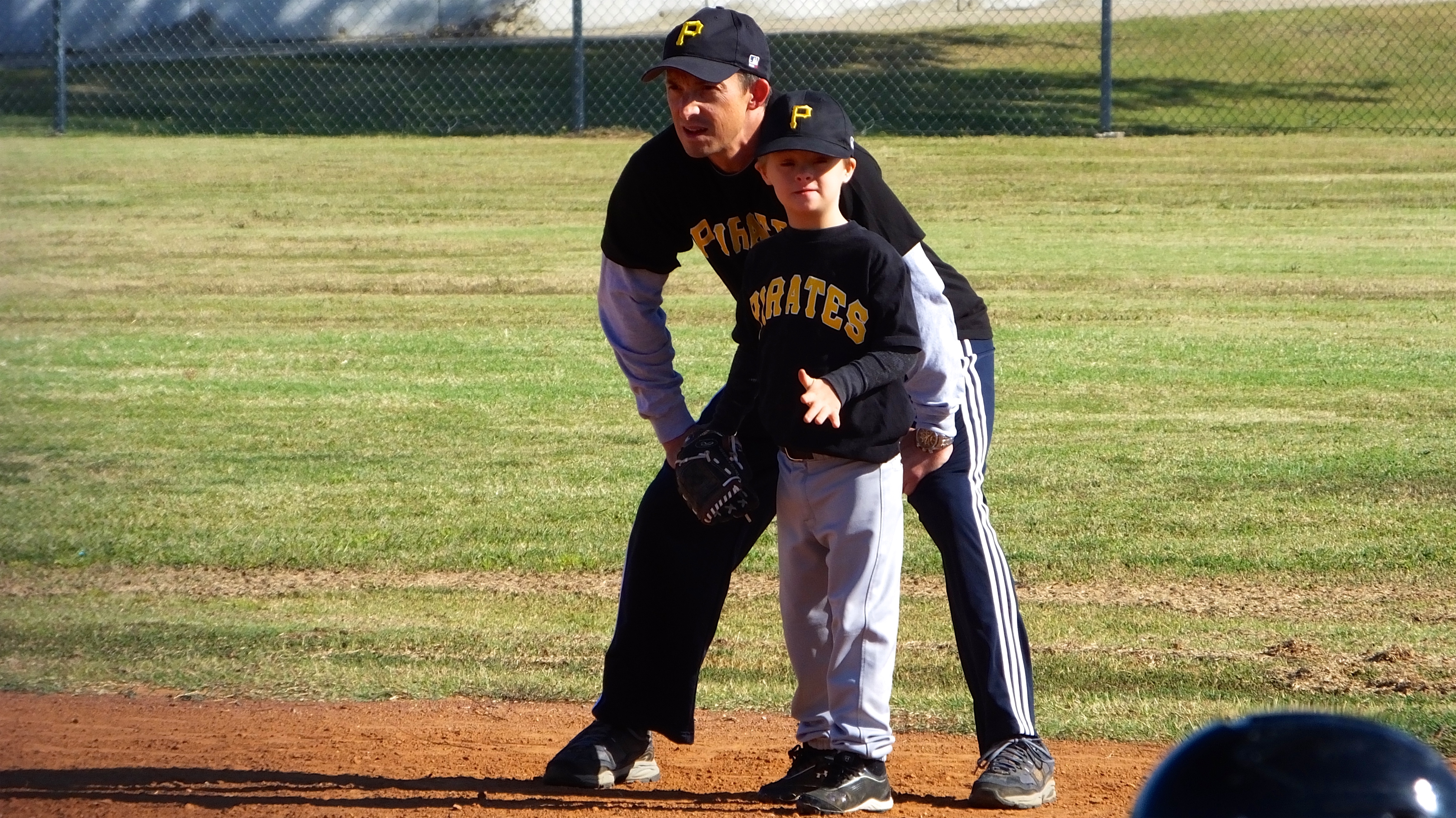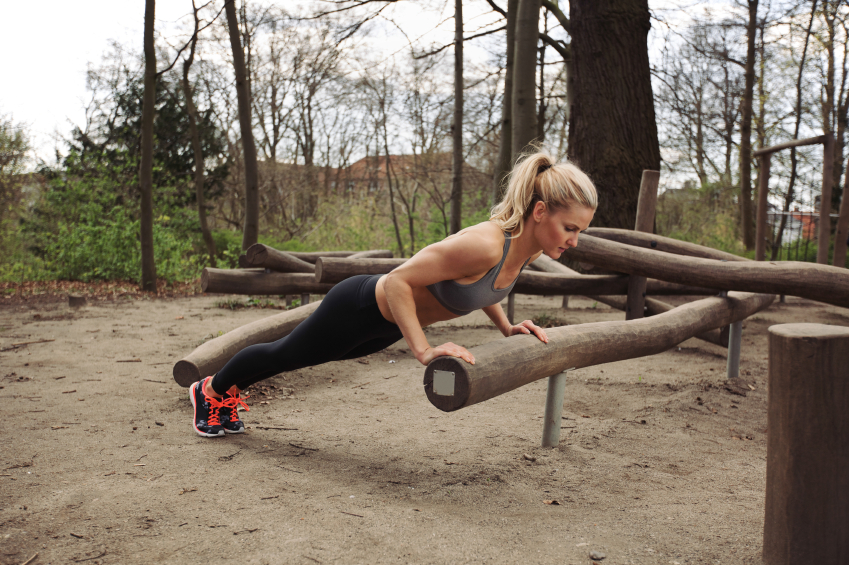The October 2014 issue of the Journal of Strength and Conditioning Research has articles by Kawamori et al and Bachero-Mena and Gonzalez-Badillo on resisted sprinting. This presents a great opportunity to take a few minutes, step back, and do a brief literature review going back a few years to look at resisted sprinting. This post is going to look at the rationale behind resisted sprinting, how it impacts sprinting acutely, and how it impacts sprinting in the long-term.
Why use resisted sprinting?
The idea behind resisted sprinting is to make the sprinting motion more difficult. In theory, making the sprinting motion more difficult by providing resistance will require the athlete to recruit more motor units to perform the sprinting motion. By learning to recruit more motor units to perform the sprinting motion, it will enable the athlete to run faster when there is no resistance. To provide resistance, things like parachutes, weighted sleds, puling tires, weight belts, sprinting uphill, and elastic tubing are used.
Where does this idea come from? This idea comes from an article that was published in the 1978 Sprints and Relays book by Nikolai Ozolin, an accomplished pole vaulter, coach, and researcher for the old USSR. In the article, Ozolin notes that athletes’ speed often fails to increase with their training due to the fact that many are training incorrectly. Essentially, he feels that incorrect training teaches the athlete to move his/her limbs at a certain speed which makes then unable to learn to move them faster. He calls this the speed barrier.
In his view, new exercises and intensities are required to break the speed barrier. The examples that he provides are alternating between sprinting with more difficult conditions (i.e. resisted sprinting) and normal conditions and also assisted sprinting. Now, it needs to be kept in perspective that this is a coaching philosophy article – there is no data. It is also unclear what type and level of athlete that this applies to. For example, an elite international sprinter has been training daily in the sprints for more than ten years and this individual will have different needs than a high school football player.
Acute effects
Hopefully it is logical that adding weight to an individual while they sprint is going to change their mechanics. This could be an issue in the sense that it may teach athletes to run with poor technique, which could be counter-productive to their speed development and increase their chances of getting injured.
With that in mind, several studies over the last few years have looked at the acute effects of resisted sprinting. Paula and Braun (2011) examined twelve Division II track and field athletes and had them perform 2×40 yard sprints with and without a parachute as resistance. They found that the sprints with the parachute were about 4.5% slower than without, the subjects leaned forward more to counteract the resistance and therefore extended their hips less.
Alcaraz et al (2008) examined unloaded sprinting, sprinting with a sled, sprinting with a parachute, and sprinting with a weight belt on flying 30 meter sprint performance. The authors used eleven track and field athletes as subjects. The sled was loaded with 16% of body mass, the weight belt had 9% of body mass. The results are summarized in the table below and are broken down by males and females:
| Men | Sled | Parachute | Weight Belt |
| Velocity change |
-12% |
-5% |
-3% |
| Stride Length change |
-8% |
-8% |
-2% |
| Stride Frequency change |
-4% |
0 |
-4% |
| Women | Sled | Parachute | Weight Belt |
| Velocity change |
-14% |
-6% |
-3% |
| Stride Length change |
-9% |
-2% |
-.5% |
| Stride Frequency change |
-5% |
-2% |
-2% |
Table 1: Approximate results of Alcaraz et al (2008) study.
Table 1 above shows some interesting information. The sled had the greatest impact for both genders, followed by the parachute, followed by the weight belt. The weight belt information is really fascinating and the authors hypothesize that it is because the weight belt is near the athlete’s center of mass, as opposed to the resistance being behind the athlete.
Obviously there are older articles that deal with the acute impact of resisted sprinting on the mechanics of sprinting. However, it is interesting that the modern research still upholds the older results. Namely that resisted sprinting alters sprinting mechanics. Naturally an athlete will lean forward when overcoming resistance that is located behind him or her, this means an inability to complete extend the hip, which limits force application against the ground. In addition, velocity is going to decrease, stride length will decrease, and stride frequency will decrease as well – all to compensate for the resistance.
The interesting item from the Alcaraz et al (2008) study is the fact that these changes, while they still exist, are minimized using a weight belt. Perhaps the location of the resistance (i.e. weight belt, weight vest, etc.) can minimize these technique changes.
Long-term effects
The preceding brings up two questions. First, are these technical alterations bad? In other words, if used as a training tool for several weeks will this have a negative impact on an athlete’s performance? Second, does this training tool work? Because if it has a negative impact, if it does not work, then a coach can save a lot of time and money by not even worrying about this.
Hyrsomallis (2012) in a literature review found that while resisted sprinting is an effective training tool, it is not more effective than sprinting without resistance. However, the author noted that most of the subjects studied are team sport athletes (as opposed to track sprinters).
Upton (2011) studied the impact of assisted and resisted sprinting on Division I female soccer players over a four week training period. The athletes trained three times per week and performed 10×20 yard sprints under one of three conditions; assisted, resisted, and traditional. At the end of four weeks of training; the assisted group improved their ability to accelerate during the first 15 yards of the 40 yard sprint, the resisted group improved their ability to accelerate during the last 25 yards of the 40 yard sprint, and the traditional group made no improvements in their performance. It’s an interesting study because it suggests differential adaptations as a result of training mode. The problem is that other studies don’t necessarily agree with this.
Clark et al (2010) studied Division III lacrosse athletes and had them train twice a week for seven weeks. One group trained without resistance, one with a weighted vest (with 18.5% of bodyweight) and another with a weighted sled (with 10% of bodyweight). Several interesting things came from the Clark et al (2010) study. First, the unresisted training was more effective (a 2% change in velocity). Second, the weighted vest was more effective than the sled. Third, while the results probably aren’t going to be statistically significant, a 2% increase in speed would have real-world significance for an athlete.
More recently, Bachero-Mena and Gonzalez-Badillo (2014) studied college students and had them train twice a week for seven weeks. The training consisted of 4-8 reps of 20-35 meters with either 5%, 12.5%, or 20% of body mass. The results showed that all were effective at improving 40 meter time, but heavy load training was better at improving shorter distance acceleration, the lighter loads were more effective at improving the flying phases within the 40 meters.
Going with the heavy load theme, Kawamori et al (2014) studied physically active males with sports experience and had them train twice a week on resisted sprints for eight weeks. One group did resisted sprints with 10% of body weight, one with 30%. The sprints were periodized and included 5, 10, and 15 meter sprints (9-14 reps per session).
Both training modes were effective at improving speed. Both training modes improved stride frequency and stride length. The heavier load did a more effective job at improving stride length, stride frequency, and time. For example, 5 and 10 meter speed increased by 5% for the heavy group and 3% for the light group. These results may not be statistically significant but they do call into question the 10% rule.
Recall that the 10% rule states that we don’t want resisted training to slow an athlete down by more than 10%. The argument is that allowing this to happen will alter the athlete’s sprinting mechanics too much and could have negative long-term implications to performance (i.e. the athlete will learn to run slowly with bad technique). In this example, that rule doesn’t appear to hold up.
Take home messages from the “long term” training studies:
- First, resisted sprinting does seem to be effective at improving performance.
- Second, it is unclear if it is more effective than unresisted training. The results on this are mixed and may be extremely population-specific. More on this thought later.
- Third, it is unclear if there is a “best” resisted sprinting tool. Most studies use sleds or parachutes. The studies looking at weight vests and weight belts, though, are extremely interesting. It would be good to see more research along those lines.
- Fourth, as no one is specifically studying this it is unclear if the 10% rule holds.
- Finally, many of the results do not have statistical significance. The populations studied are too small, the numbers are too small, the changes too little. However, with speed training statistical significance and real world significance may be different things. For example, a 5% improvement in speed will make a huge difference on the field even if it is not statistically significant.
Now, the population-specific thought: In my opinion, resisted sprinting is one of those tools that is going to be more effective for an athlete with a long training history with sprinting and a good level of strength. For other types of athletes, training time is probably going to be best spent developing technique, the ability to exert force against the ground, and developing the endurance to maintain good technique while sprinting.
References:
Alcaraz, P.E., Palao, J.M., Elvira, J.L.L., Linthorne, N.P. (2008). Effects of three types of resisted sprint training devices on the kinematics of sprinting at maximal velocity. Journal of Strength and Conditioning Research, 22(3), 890-897.
Bachero-Mena, B. and Gonzalez-Badillo, J.J. (2014). Effects of resisted sprint training on acceleration with three different loads accounting for 5, 12.5, and 20% of body mass. Journal of Strength and Conditioning Research, 28(10), 2954-2960.
Clark, K.P., et al. (2010). The longitudinal effects of resisted sprint training using weighted sleds versus weighted vests. Journal of Strength and Conditioning Research, 24(12), 3287-3295.
Harrison, A.J. and Bourke, G. (2009). The effect of resisted sprint training on speed and strength performance in male rugby players. Journal of Strength and Conditioning Research, 23(1).
Hyrsomallis, C. (2012). The effectiveness of resisted movement training on sprinting and jumping performance. Journal of Strength and Conditioning Research, 26(1), 299-306.
Kawamori, N., Newton, R.U., Hori, N., and Nosaka, K. (2014). Effects of weighted sled towing with heavy versus light load on sprint acceleration ability. Journal of Strength and Conditioning Research, 28(10), 2738-2745.
Maulder, P.S., Bradshaw, E.J., and Keogh, J.W.L. (2008). Kinematic alterations due to different loading schemes in early acceleration sprint performance from starting blocks. Journal of Strength and Conditioning Research, 22(6), 1992-2002.
Ozolin, N. (1978) How to improve speed, in Jarver, J. (ed.) Sprints and Relays, Mountain View, CA: TAFNEWS Press, pp. 55–6.
Paulson, S. and Braun, W.A. (2011). The influence of parachute-resisted sprinting on running mechanics in collegiate track athletes. Journal of Strength and Conditioning Research, 25(6): 1680-1685.
Upton, D. (2011). The effect of assisted and resisted sprint training on acceleration and velocity in division IA female soccer athletes. Journal of Strength and Conditioning Research, 25(10): 2645-2652.


